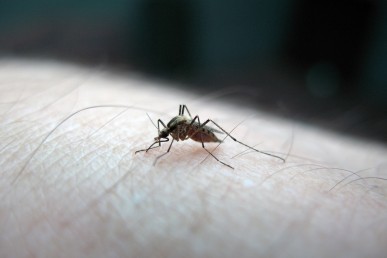Should babies born in areas harboring Zika be screened for eye abnormalities?
Should babies without microcephaly but who were born in regions affected by Zika be tested for eye disorders that have been linked to the virus? UIC pediatric ophthalmologists will examine that question under a one-year, $30,000 grant from the Blind Children’s Center.
Dr. R. V. Paul Chan and Dr. Marilyn Miller, professors of ophthalmology and visual sciences in the UIC College of Medicine, will work with their colleagues and long-time friends Drs. Liana and Camila Ventura of the Altino Ventura Foundation in Recife, Brazil, to determine if children born in areas where the mosquito that carries the Zika virus is prevalent should be screened for eye problems.
The port city of Recife is considered ground zero for the recent Zika outbreak, which began in 2015. Between April and November of last year, 18 of the 27 states of Brazil reported cases. Since then, Brazil has seen a 20-fold increase in cases of microcephaly among newborns.
The virus is carried by Aedes mosquitos, the same genus that transmits several other tropical fevers. Symptoms of Zika infection are numerous, including neurological disorders and eye disorders. For some, the symptoms may be mild or even undetected, but infection during pregnancy can lead to devastating neurological diseases including microcephaly, or small head.
“There are so many questions we still have not yet answered about the effects of Zika infection,” says Chan, who is also vice chair for global ophthalmology at UIC and director of pediatric retina and retinopathy of prematurity service at the Illinois Eye and Ear Infirmary at UIC. “We still don’t know the extent of problems that can result if the mother is exposed.
“Right now, most people just know about microcephaly,” Chan said. “And we do know that in some babies with microcephaly there are also changes in the eye, so we want to know if these eye changes can occur in babies who may have been exposed but for some reason don’t develop microcephaly.”
The Altino Ventura Foundation includes a non-profit clinic and rehabilitation center that provides eye care to low-income patients, as well as speech and occupational therapy and other services. Many of their patients include mothers and babies affected by Zika.
The Venturas were the first to publish on the eye manifestations of Zika infection, Chan said. They and their colleagues in Brazil documented changes the retina and optic nerve in about 55 percent of babies born with microcephaly during the Zika outbreak.
The Venturas will send Chan and Miller retinal photographs of all babies born at a maternity hospital near the clinic. The UIC ophthalmologists will review the images and note any abnormalities, particularly in the area of the retina where the optic nerve arises. Babies with eye abnormalities will be followed up with a pediatric ophthalmologist every three months and retinal imaging every six months to see if changes worsen or if new changes arise.
“We don’t know if the virus can sit latent in the eye, or for how long, so we need to keep checking in with these children to see if eye issues arise,” said Chan.
Blood samples will also be taken to be screened for Zika as well as a host of other infectious diseases, including dengue and chikungunya, which are also carried by Aedes mosquitos.
“If we determine that babies born without microcephaly can still have eye changes likely caused by the virus, that means that all babies born during the outbreak should be screened for eye issues,” Chan said. “If we can characterize what these changes are, and can catch them early, many of them can be treated and the risk to vision reduced.”
